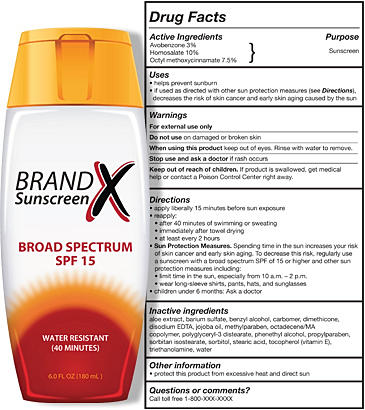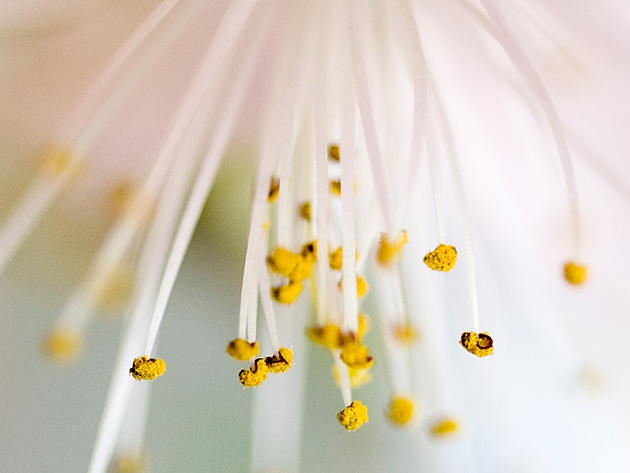Natural Sunscreens
June 2, 2014
Here are some of our favorite SPF’s that have formulated without the use of harmful chemicals to both humans and our planet
"Did you know that both Siren Serum and S.O.S. have natural sunscreens in them? Get the glow with Siren Skin!"
- Lavera Sunscreens: their broad spectrum sunscreens block UVA, UVB and even UVC radiation. Their formulations are available in lotions, sprays and lip balms. Lavera sunscreens are paraben-free, cruelty-free, gluten-free and contain both physical and biological UV filters. Certified natural by BDHI.
- 100% Pure Organic Pomegranate Antioxidant SPF 20: 100% natural and vegetarian broad spectrum sunscreen. Formulated with certified organic ingredients. 100% sunscreen contains physical and biological UV filters which also protect the skin against free radicals present in the environment. Free of chemicals, fragrances and synthetic preservatives.
- Sante Sun Lotion SPF 30: broad spectrum sunscreen formulated with physical and biological UV filters. It is effective immediately after application, whereas most sunscreens take 15-30 min to bond with your skin. Water resistant, dermatologist tested. Free of synthetic colorants, fragances, synthetic sunscreen agents, preservatives and emulsifiers. Certified natural by BDIH.
Certified Organic products that protect against UV radiation:
- Sophyto Polyphenol Skin Drops: formulated with polyphenol extracts derived from organic green and white tea, organic apples, organic grapes and organic olive leaf. Combine with your sunscreen to boost antioxidant protection within the epidermis.
- Sophyto Mega Omegas Day Face Moisturiser: rich in vegetable Omega 3 Fatty Acids which reduce inflammation and keeps it supple. This moisturizer also contains biological filters such as shea butter and raspberry oil. Raspberry oil offers the skin broad spectrum protection from damaging UVA and UVB rays. The SPF of red raspberry seed oil has been found to be equal to that of titanium dioxide.
Mineral Makeup:
- Suncat mineral makeup: formulated with uncoated titanium dioxide and zinc oxide. Ideal for those who need heavy coverage but do not want to resort to clogging foundations. Free of silicones, parabens, fillers, carmine, bismuth oxychloride, ultramarines, boron nitrides, nanoparticles, micronized minerals. Suit all skin types. Naturally water and sweat resistant minerals that let your skin breathe.
- Coastal Classic Creations tinted loose powders: contain high purity iron oxide (physical UV filters which blocks both UVA and UVB rays). Suitable for all skin types. Coastal Classic loose powders do not contain bismuth oxychloride, mica, boron nitride, dimethicone, nano/micronized particles, talc parabens and carmine. Keep the pores free of all debris. By far, the purest minerals I have ever used.
Refrence: Karen Sinclair Drake
Sun Exposure and Aging...
June 1, 2014
"One of the best things we can do for our skin when it comes to aging is protecting it from the UVA & UVB rays..."
Without protection from the sun’s rays, just a few minutes of exposure each day over the years can cause noticeable changes to the skin. Freckles, age spots, spider veins on the face, rough and leathery skin, fine wrinkles that disappear when stretched, loose skin, a blotchy complexion, actinic keratoses (thick wart-like, rough, reddish patches of skin), and skin cancer can all be traced to sun exposure.
“Photoaging” is the term dermatologists use to describe this type of aging caused by exposure to the sun’s rays. The amount of photoaging that develops depends on: 1) a person’s skin color and 2) their history of long-term or intense sun exposure. People with fair skin who have a history of sun exposure develop more signs of photoaging than those with dark skin. In the darkest skin, the signs of photoaging are usually limited to fine wrinkles and a mottled complexion.
Photoaging occurs over a period of years. With repeated exposure to the sun, the skin loses the ability to repair itself, and the damage accumulates. Scientific studies have shown that repeated ultraviolet (UV) exposure breaks down collagen and impairs the synthesis of new collagen. The sun also attacks our elastin. Sun-weakened skin ceases to spring back much earlier than skin protected from UV rays. Skin also becomes loose, wrinkled, and leathery much earlier with unprotected exposure to sunlight.
“Photoaging” is the term dermatologists use to describe this type of aging caused by exposure to the sun’s rays. The amount of photoaging that develops depends on: 1) a person’s skin color and 2) their history of long-term or intense sun exposure. People with fair skin who have a history of sun exposure develop more signs of photoaging than those with dark skin. In the darkest skin, the signs of photoaging are usually limited to fine wrinkles and a mottled complexion.
Photoaging occurs over a period of years. With repeated exposure to the sun, the skin loses the ability to repair itself, and the damage accumulates. Scientific studies have shown that repeated ultraviolet (UV) exposure breaks down collagen and impairs the synthesis of new collagen. The sun also attacks our elastin. Sun-weakened skin ceases to spring back much earlier than skin protected from UV rays. Skin also becomes loose, wrinkled, and leathery much earlier with unprotected exposure to sunlight.
References:
American Academy of Dermatology. “Turning Back the Hands of Time.” February 21, 2005.
Last accessed June 20, 2005.
Demierre MF et al. “Public knowledge, awareness, and perceptions of the association between skin aging and smoking.” Journal of the American Academy of Dermatology, 1999 Jul;41(1):27-30.
Fisher GJ. “The Pathophysiology of Photoaging of the Skin.” Cutis, 2005 Feb;75(2S):5-9.
Koh JS et al. “Cigarette smoking associated with premature facial wrinkling: image analysis of facial skin replicas.” International Journal of Dermatology, 2002 Jan;41(1)21-27.
Moschella S and Hurley H. (1992) “Aging and Its Effects on the Skin.” Dermatology: Third Edition. Philadelphia: W.B. Saunders Company.
Oikarinen A. “Aging of the skin connective tissue: how to measure the biochemical and mechanical properties of aging dermis.” Photodermatology, Photoimmunology and Photomedicine, 1994 Apr;10(2):47-52.
American Academy of Dermatology. “Turning Back the Hands of Time.” February 21, 2005.
Last accessed June 20, 2005.
Demierre MF et al. “Public knowledge, awareness, and perceptions of the association between skin aging and smoking.” Journal of the American Academy of Dermatology, 1999 Jul;41(1):27-30.
Fisher GJ. “The Pathophysiology of Photoaging of the Skin.” Cutis, 2005 Feb;75(2S):5-9.
Koh JS et al. “Cigarette smoking associated with premature facial wrinkling: image analysis of facial skin replicas.” International Journal of Dermatology, 2002 Jan;41(1)21-27.
Moschella S and Hurley H. (1992) “Aging and Its Effects on the Skin.” Dermatology: Third Edition. Philadelphia: W.B. Saunders Company.
Oikarinen A. “Aging of the skin connective tissue: how to measure the biochemical and mechanical properties of aging dermis.” Photodermatology, Photoimmunology and Photomedicine, 1994 Apr;10(2):47-52.
Eat Your SPF??
June 2, 2014
Top foods you can eat that help protect you fron the sun.
Foods and Nutrients that boost your skin’s antioxidant protection against UV radiation
With the overwhelming increase in awareness about the use of chemicals in our personal care products and their negative effects, this has put more emphasis on researching natural alternatives.
Thankfully there are now companies producing effective natural sunscreens which is just one way to keep our skin healthy and help to prevent sun related aging. But let’s look and some foods and nutrients that also help boost our skin’s antioxidant levels to protect against UV radiation;
- Cocoa (dark chocolate): contains 4 times as much phenols and catechins as tea. These antioxidants protect our skin from sunburn and skin cancer. Milk should not be added to the chocolate as it interferes with the absorption of its antioxidants. Recommended dose: 2 ounces of dark chocolate daily.
- Green and black teas: rich in polyphenols. Polyphenols are one of the most powerful botanical antioxidants known today. They offer unrivalled action against free radical exposure which is responsible for 80% of skin aging and can boost your skin`s antioxidant protection from the inside out. According to a study, drinking two or more cups of either black or green tea reduces the risk of developing squamous cell skin cancer by 30%.
- Micro-algae: like chlorella and spirulina, contain a carotenoid called Astaxanthin. Astaxanthin is, perhaps, the most powerful ever studied. It is 550 times more powerful than Vitamin E, and it has been shown to protect the skin and eyes against Ultraviolet radiation.
- Carotenoids: are antioxidants which reduce the negative effects of UVB radiation. Green leafy vegetables are rich in oxygenated carotenoid compounds known as xanthophylls. Carotenes are unoxygenated carotenoid compounds which provide pigment to fruits and vegetables. This pigment is used by plants as sunscreen and can activate melanin. Foods containing high concentrations of carotenes are: apricots, papaya, mango, carrots, sweet potatoes and beets.
- Lycopene: is a red carotenoid which protects the skin against sunburn and skin cancer. It is at least twice as effective an antioxidant as beta carotene to block UV light (has an SPF of about 3). Foods high in lycopene include watermelon, tomatoes, papaya, pink guava, red bell peppers and pink grapefruit. Watermelon is especially rich in lycopene, it contains 40% more lycopene than tomatoes.
- Pomegranates: contain powerful polyphenol compounds such as catechins and anthocyanins which strengthen the skin`s upper layers, thus increasing its resistance to harmful UV rays.
- Tocotrienols: are a group of compunds which belong to the Vitamin E family. They are 30-60 more powerful than tocopherols thus, they neutralize free radical activity at a faster rate. Tocotrienols are capable of reducing/absorbing penetration of UV radiation. Barley, rye, oats, annatto oil, rice bran oil and palm oil are natural, rich sources of tocotrienols.
- Vitamin C: prevents premature aging and skin cancer by warding off free radicals. The best natural sources of Vitamin C are acerola cherry, rose hip, berries, guava, kiwi, papaya and all citrus fruits.
- Vitamin D: it protects against many types of cancer, including skin cancer. Supplementation is in order for people who live in areas with long winters and/or people who do not take sunbaths.
- Broccoli: has anti-cancerours effects and is rich in an antioxidant called sulphoraphane. A research showed that sulphoraphane helps body cells to protect themselves against the ravages of UV radiation .
- Green leafy vegetables: according to a study spinach, kale and swiss chard may reduce risk of squamous cell skin cancer by 50 percent
- Omega 3 fatty acids: can reduce inflammation, protect your skin from sunburn and melanoma (a deadly form of skin cancer). Salmon, sardines, herring, mackerel, algae/seaweed, green leafy vegetables, flax, hemp and chia seeds are rich sources of Omega 3 fatty acids.
- Orange peels: 1 tsp. per week reduces the risk of squamous cell skin cancer
- Histidine-rich foods: stimulate healthy production of urocanic acid (a natural photoprotectant).Although adult humans produce this amino acid, it is believed that natural supplies run short easily. Histidine can be found in: meat, dairy products and grains such as rice, wheat and rye.
- Water: keeping your skin hydrated encourages a healthy NMF (natural moisture factor) which in turn, protects your skin from environmental factors. It is also important to drink plenty of fluids after sun exposure to prevent dehydration.
Refrence Karen Sinclair Drake
Sunscreen or Smokescreen??
June 2, 2014
The Food and Drug Administration (FDA) is taking steps to help protect consumers from skin damage caused by excessive sun exposure.
The measures include the following:
- final regulations that establish standards for testing the effectiveness of sunscreen products and require labeling that accurately reflects test results
- a proposed regulation that would limit the maximum SPF value on sunscreen labeling to “SPF 50+”
- a data request for safety and effectiveness information for sunscreen products formulated in certain dosage forms (e.g., sprays)
- a draft guidance for sunscreen manufacturers on how to test and label their products in light of these new measures.
These measures are necessary, says Lydia Velazquez, PharmD, in FDA’s Division of Nonprescription Regulation Development, because “our scientific understanding has grown. We want consumers to understand that not all sunscreens are created equal.”
“This new information will help consumers know which products offer the best protection from the harmful rays of the sun,” Velazquez says. “It is important for consumers to read the entire label, both front and back, in order to choose the appropriate sunscreen for their needs.”
Everyone is potentially susceptible to sunburn and the other detrimental effects of exposure to UV radiation.
back to top
FDA's Final Regulations
The final regulations, which become effective June 18, 2012, establish a standard test for over-the-counter (sold without a prescription) sunscreen products that will determine which products are allowed to be labeled as “Broad Spectrum.”
However, to avert a shortage of sunscreen in the upcoming months, FDA has extended the compliance dates for testing and labeling until Dec. 17, 2012 for most over-the-counter sunscreen products. This decision followed a review of timelines and other data submitted by trade associations representing sunscreen manufacturers.
“With summer coming, we wanted to ensure we had sunscreen products available on store shelves for everyone,” says Velazquez.
Products that pass the broad spectrum test will provide protection against both ultraviolet B radiation (UVB) and ultraviolet A radiation (UVA). Sunburn is primarily caused by UVB. Both UVB and UVA can cause sunburn, skin cancer, and premature skin aging. A certain percentage of a broad spectrum product’s total protection is against UVA.
Under the new regulations, sunscreen products that protect against all types of sun-induced skin damage will be labeled "Broad Spectrum" and “SPF 15” (or higher) on the front.
The new labeling will also tell consumers on the back of the product that sunscreens labeled as both “Broad Spectrum” and “SPF 15” (or higher) not only protect against sunburn, but, if used as directed with other sun protection measures, can reduce the risk of skin cancer and early skin aging. For these broad spectrum products, higher SPF (Sun Protection Factor) values also indicate higher levels of overall protection.
By contrast, any sunscreen not labeled as “Broad Spectrum” or that has an SPF value between 2 and 14, has only been shown to help prevent sunburn.
Reynold Tan, a scientist in FDA’s Division of Nonprescription Regulation Development, notes that FDA has been developing testing and labeling requirements for sunscreen products for decades. However, only recently have the data become sufficient to establish an accurate and reliable test for broad spectrum UV protection, he says.
To help consumers select and use sunscreens appropriately, the final regulations include these additional labeling provisions:
- Sunscreen products that are not broad spectrum or that are broad spectrum with SPF values from 2 to14 will be labeled with a warning that reads: “Skin Cancer/Skin Aging Alert: Spending time in the sun increases your risk of skin cancer and early skin aging. This product has been shown only to help prevent sunburn, not skin cancer or early skin aging.”
- Water resistance claims on the product's front label must tell how much time a user can expect to get the declared SPF level of protection while swimming or sweating, based on standard testing. Two times will be permitted on labels: 40 minutes or 80 minutes.
- Manufacturers cannot make claims that sunscreens are “waterproof” or “sweatproof” or identify their products as “sunblocks.” Also, sunscreens cannot claim protection immediately on application (for example, “instant protection”) or protection for more than two hours without reapplication, unless they submit data and get approval from FDA.
FDA Proposed Regulations, Data Requests, and a Draft Guidance
In addition to the final regulations, in June 2011 FDA proposed a regulation that would require sunscreen products that have SPF values higher than 50 to be labeled as “SPF 50+.” FDA does not have adequate data demonstrating that products with SPF values higher than 50 provide additional protection compared to products with SPF values of 50.
FDA also requested data and information on different dosage forms of sunscreen products. The agency currently considers sunscreens in the form of oils, creams, lotions, gels, butters, pastes, ointments, sticks, and sprays to be eligible for potential inclusion in the OTC sunscreen monograph – meaning that they can be marketed without individual product approvals.
The agency currently considers wipes, towelettes, powders, body washes, and shampoo not eligible for the monograph. Therefore, they cannot be marketed without an approved application.
For sunscreen spray products, the agency requested additional data to establish effectiveness and to determine whether they present a safety concern if inhaled unintentionally. These requests arose because sprays are applied differently from other sunscreen dosage forms, such as lotions and sticks.
In addition, FDA issued a draft guidance to help sunscreen manufacturers understand how to label and test their products in light of the final and proposed regulations and the data request on dosage forms.
FDA has received numerous comments on the labeling proposal, draft guidance and requests for data. The agency is currently evaluating the data and information included in these comments.
Sun Safety Tips
Spending time in the sun increases the risk of skin cancer and early skin aging. To reduce this risk, consumers should regularly use sun protection measures including:
- Use sunscreens with broad spectrum SPF values of 15 or higher regularly and as directed.
- Limit time in the sun, especially between the hours of 10 a.m. and 2 p.m., when the sun’s rays are most intense.
- Wear clothing to cover skin exposed to the sun; for example, long-sleeved shirts, pants, sunglasses, and broad-brimmed hats.
- Reapply sunscreen at least every 2 hours, more often if you’re sweating or jumping in and out of the water.
This article appears on FDA's Consumer Updates page, which features the latest on all FDA-regulated products.





